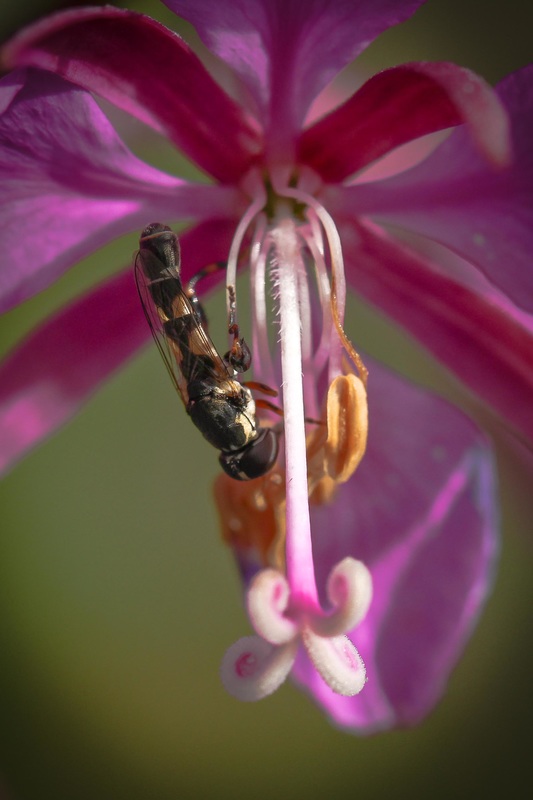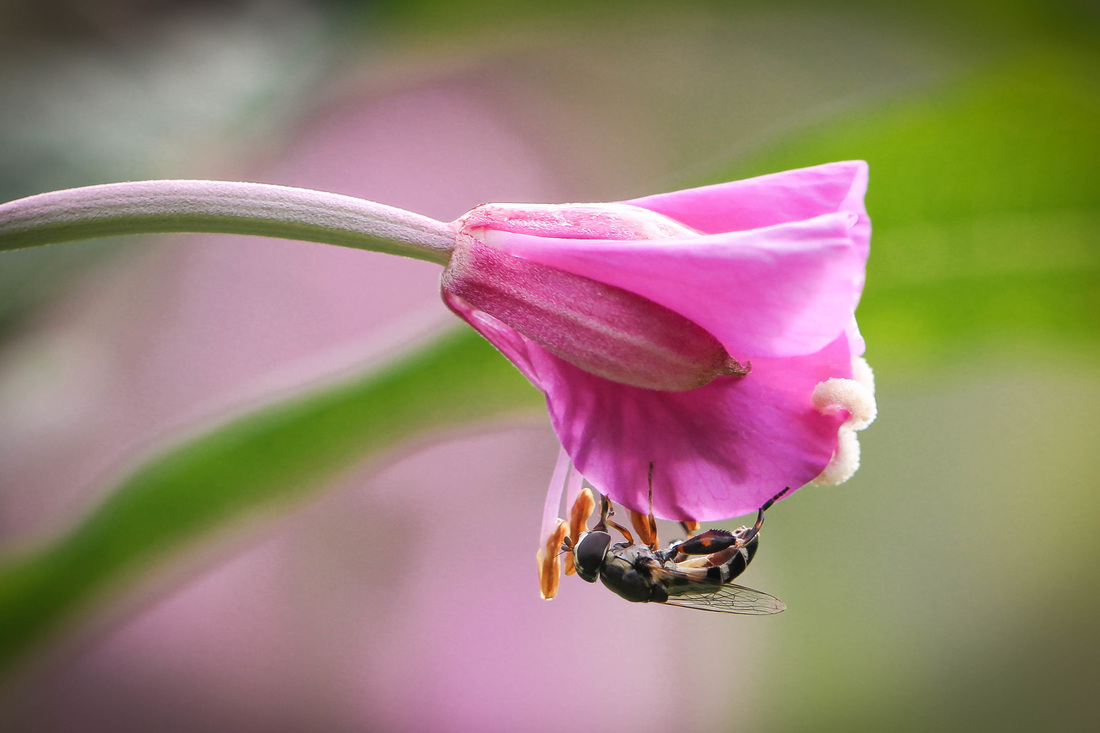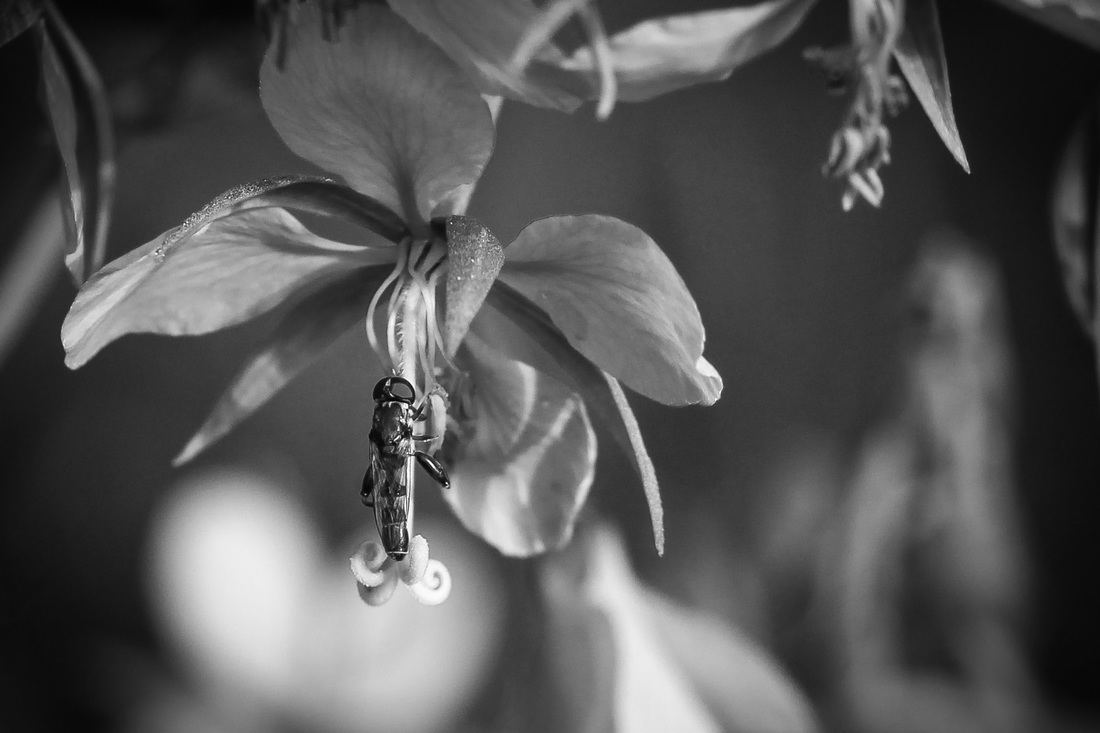Syritta pipiens
Identification
Like many hoverfly species (Family Syrphidae), the thick-legged hoverfly mimics bees and wasps with its bold black and yellow colouring (Batesian mimcry). While accurate insect IDs in general can be tricky, a couple of key features help identify this species. First is the thick, overdeveloped upper portion of the back legs (the hind femur) which led to its common name. Another feature is a pair of pale, wedge-shaped marks located on the thorax immediately behind the head. There is also a row of spines along one side of the thick hind femur. More identification details can be found on the BugGuide species page.
Habitat & Range
Originally introduced from Europe, the thick-legged hoverfly is now found across most of North America except for northern Canada. It is commonly found in backyards and gardens, and breeds in wet, decaying organic material like compost heaps and manure piles. This species can be seen in spring and summer.
Intriguing Info
Syritta pipiens and S. flaviventris, the other species of the genus found in North America, were both accidentally introduced from Europe.
This species has been found feeding on human corpses involved in crime scene investigations, indicating its potential usefulness in forensic entomology. See Magni et al. (2013) for more information.
iNaturalist
https://www.inaturalist.org/taxa/81979-Syritta-pipiens
Like many hoverfly species (Family Syrphidae), the thick-legged hoverfly mimics bees and wasps with its bold black and yellow colouring (Batesian mimcry). While accurate insect IDs in general can be tricky, a couple of key features help identify this species. First is the thick, overdeveloped upper portion of the back legs (the hind femur) which led to its common name. Another feature is a pair of pale, wedge-shaped marks located on the thorax immediately behind the head. There is also a row of spines along one side of the thick hind femur. More identification details can be found on the BugGuide species page.
Habitat & Range
Originally introduced from Europe, the thick-legged hoverfly is now found across most of North America except for northern Canada. It is commonly found in backyards and gardens, and breeds in wet, decaying organic material like compost heaps and manure piles. This species can be seen in spring and summer.
Intriguing Info
Syritta pipiens and S. flaviventris, the other species of the genus found in North America, were both accidentally introduced from Europe.
This species has been found feeding on human corpses involved in crime scene investigations, indicating its potential usefulness in forensic entomology. See Magni et al. (2013) for more information.
iNaturalist
https://www.inaturalist.org/taxa/81979-Syritta-pipiens
References
Magni, P. A. et al. (2013). Syritta pipiens (Diptera: Syrphidae), a new species associated with human cadavers. Forensic Science International. 231: e19-223.
Marshall, S. A. (2012). Flies: The Natural History and Diversity of Diptera. Richmond Hill, ON: Firefly Books. Pp. 307, 425.
Species Syritta pipiens. BugGuide. Accessed 24/09/2015.
Authors and editors
Kelly Fretwell and Brian Starzomski (2015).
Magni, P. A. et al. (2013). Syritta pipiens (Diptera: Syrphidae), a new species associated with human cadavers. Forensic Science International. 231: e19-223.
Marshall, S. A. (2012). Flies: The Natural History and Diversity of Diptera. Richmond Hill, ON: Firefly Books. Pp. 307, 425.
Species Syritta pipiens. BugGuide. Accessed 24/09/2015.
Authors and editors
Kelly Fretwell and Brian Starzomski (2015).







